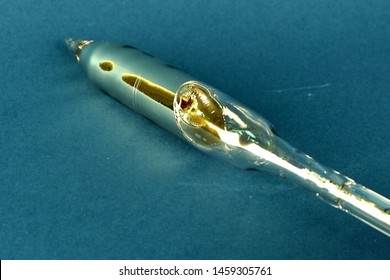What Is The Most Active Metal

The reactivity of metals is a fundamental concept in chemistry, and it’s crucial to understand which metals are more prone to reacting with other elements. Among all the metals, cesium (Cs) is widely considered the most active metal due to its unique combination of physical and chemical properties.
To comprehend why cesium stands out, let’s delve into the world of periodic table trends and the factors that influence metal reactivity. In the periodic table, elements are arranged in a specific order based on their atomic number (number of protons in the nucleus) and recurring chemical properties. The position of an element in the periodic table can significantly impact its reactivity.
Metals in Group 1 of the periodic table, also known as the alkali metals, are generally highly reactive. This is because they have one electron in their outermost shell, which they readily lose to form a positive ion (cation) with a +1 charge. This process, known as ionization, requires relatively low energy, making Group 1 metals highly reactive.
Cesium, being the heaviest element in Group 1, exhibits the lowest ionization energy among all the elements. This means that it can easily lose its single outer electron, making it extremely reactive. Cesium’s high reactivity is further enhanced by its relatively large atomic radius, which results in a low effective nuclear charge experienced by the outer electron. The low effective nuclear charge reduces the attraction between the nucleus and the outer electron, making it even easier for the electron to escape.
One of the most striking demonstrations of cesium’s reactivity is its violent reaction with water. When cesium comes into contact with water (H2O), it immediately reacts to produce cesium hydroxide (CsOH) and hydrogen gas (H2). This reaction is so vigorous that it often ignites the hydrogen gas, causing a fire. The reaction can be represented by the following equation:
2Cs (s) + 2H2O (l) → 2CsOH (aq) + H2 (g)
Given its extreme reactivity, handling cesium requires special precautions. It must be stored in sealed containers filled with an inert gas, such as argon or nitrogen, to prevent it from reacting with air. Cesium’s high reactivity also makes it useful for various applications, including photoelectric cells and as a catalyst in certain chemical reactions.
While discussing cesium, it’s also interesting to compare its reactivity with other metals. For instance, metals like sodium (Na) and potassium (K), which are also in Group 1, are highly reactive but to a lesser extent than cesium. Sodium reacts with water to produce sodium hydroxide and hydrogen gas, but the reaction is less violent compared to cesium. The reactivity decreases as you move up in Group 1 due to the decrease in atomic radius and the increase in ionization energy.
In conclusion, cesium’s unique combination of a low ionization energy, large atomic radius, and single outer electron makes it the most active metal among all the elements. Its extreme reactivity has both benefits and drawbacks, necessitating careful handling but also making it useful for specific applications. Understanding the principles behind metal reactivity can provide valuable insights into the behavior of elements and their potential uses in various fields.
Key Takeaways
- Cesium is the most active metal due to its low ionization energy and large atomic radius.
- Its reactivity is demonstrated by its violent reaction with water to produce cesium hydroxide and hydrogen gas.
- Cesium's handling requires special precautions due to its extreme reactivity.
- It has useful applications despite its challenges, including in photoelectric cells and as a catalyst.
In exploring the realm of highly reactive metals, it becomes clear that their properties can both fascinate and challenge us. Whether in academic research or industrial applications, understanding and harnessing the power of these metals can lead to significant advancements.
"The unique characteristics of metals like cesium underscore the importance of fundamental research in chemistry. By understanding the underlying principles of reactivity, scientists can develop new materials and technologies that transform industries and improve lives."
— Dr. Maria Rodriguez, Materials Scientist
The journey into the world of chemistry and metals reactivity is one of discovery and intrigue. As we continue to explore and understand the properties of elements like cesium, we open the door to new discoveries and innovations that can shape the future.
What makes cesium the most reactive metal?
+Cesium's low ionization energy, large atomic radius, and single outer electron make it highly prone to losing its electron and reacting with other elements.
How does cesium react with water?
+Cesium reacts violently with water to produce cesium hydroxide and hydrogen gas, a reaction that can ignite the hydrogen gas.
What are some applications of cesium despite its reactivity challenges?
+Cesium is used in photoelectric cells and as a catalyst in certain chemical reactions, demonstrating its utility beyond its reactivity.
In conclusion, the study of metals like cesium not only enhances our understanding of chemistry but also highlights the potential for innovation and discovery in the field. By embracing the complexities and challenges of highly reactive metals, scientists and researchers can unlock new technologies and applications that benefit society as a whole.
